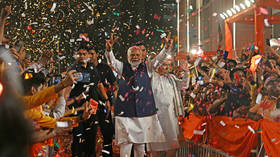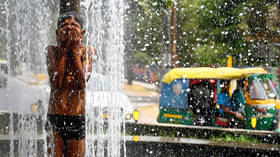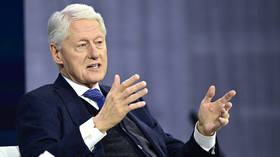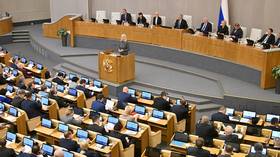Modi in limbo: With no majority, the Indian PM is at the mercy of his coalition partners
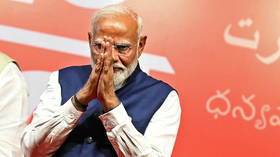
Make no mistake, “strong leader” Narendra Modi made himself the centrepiece of the 2024 Lok Sabha (parliamentary lower house) election. Modi was the medium and Modi was the message, complete with a “Modi guarantee” for voters in the most presidential-style elections that India has ever seen.
And the little guy – the voter – cut the prime minister down to size in the biggest reversal of his political career. He had parachuted into the Gujarat chief minister’s office in 2001, and has never since lost an election, neither in Gujarat nor, before this, as the two-term prime minister.
Modi wanted to equal the three terms with a single-party majority achieved by India’s first Prime Minister Jawaharlal Nehru, but has fallen short. Nehru remains his intellectual nemesis. In 2014, Modi promised hope on the back of the “acche din” (good days) he would bring. In 2019, it was national security on the ballot after the Pulwama massacre – a terrorist attack in Kashmir in February 2019, in which 40 Indian paramilitary personnel died after a blast hit their convoy. New Delhi retaliated with a Balakot airstrike conducted by the Indian Air Force on February 26 targeting an alleged training camp of the terrorist group Jaish-e-Mohammed.
This time around, Modi gave more than 80 scripted interviews which revealed his insight into how he considered himself to be infallible and nearly “divine,” or a “non-biological creation,” as he described it.
He held 206 public meetings, with his rhetoric focusing on majoritarian issues: mutton (a dish associated with the Muslim’s Eid holiday); Muslim interlopers or ‘ghuspetias’ (infiltrators, in colorful vernacular); and ‘mujra’ (a dance associated with Muslim courtesans). He also openly spoke of how the opposition was conspiring to rob Hindus of their ‘mangalsutra’ (the wedding necklace) and their buffalos, to give to, you guessed it, the Muslims.
The new parliament will have 26 Muslim MPs, but Modi’s Bharatiya Janata Party (BJP) took pride in fielding just one (Abdul Salam, in Kerala’s Malappuram).
Now, as Modi scrambles to remain as prime minister, his very style of being confrontational and extremely aggressive with his allies is proving to be a tough sell. The BJP needs to retain as allies the chief minister of Bihar state, Nitish Kumar, a veteran political somersaulter whose Janata Dal (United) (JDU) party took the most seats in heavily populated Bihar, and Chandrababu Naidu, whose Telugu Desam Party (TDP) swept the state election in south India’s Andhra Prades.
Naidu is a recent and reluctant ally as Modi’s BJP had broken his TDP in 2019, and allegedly threatened him with action by enforcement agencies, as has happened with other political leaders.
Now, the kingmakers Kumar and Naidu are proving difficult and are asking for the moon, including goodies like the Lok Sabha speaker’s post and the finance ministry. Kumar is indicating that he would like to be deputy prime minister in return for backing Modi.
Ideally, they would like a government without Modi and his chief lieutenant Amit Shah. They want a model similar to when the first BJP prime minister, Atal Behari Vajpayee, ran a successful coalition government in 1998.
So how did it all go so wrong? Modi wanted to ensure success in Maharashtra, the state with the second highest number of Lok Sabha seats (48); and so is believed to have broken the constituent ruling parties using the brute power of investigative agencies. The Maharashtra voters punished him by giving the lion’s share of the seats to the INDIA (Indian National Development Inclusive Alliance) bloc.
The biggest reality check was provided in Uttar Pradesh (UP), country’s most populous state whose 80 Lok Sabha seats have an outsized influence on capturing power in Delhi. UP had powered Modi into government twice, but this time around the UP voters humbled him.
Modi’s margin of victory in his own constituency, the holy town of Varanasi, fell to its lowest, at 152,000. His ministers from UP – Smriti Irani, Ajay Singh Teni and Sanjeev Balyan – all lost prestigious seats.
Despite the grand Ram temple consecration – a Hindu temple in Ayodhya, built on the land where a mosque once stood, the BJP also lost the Faizabad constituency, where the temple is located.
Rahul Gandhi of the Indian National Congress and Akhilesh Yadav of the Samajwadi party, a regional UP heavyweight, were allies in the INDIA alliance. They campaigned over the lack of jobs and the BJP’s open determination to change the constitution – the BJP is widely believed to be planning to replace affirmative action for Dalits, India’s most marginalized community, which has faced considerable discrimination in the past and still does so in many spheres of social life. This struck a chord with voters.
Modi’s attacks on opposition leaders and critics, who faced investigation by the economic intelligence agency and revenue department in the run up to the election, was overkill and raised eyebrows given the corruption allegations leveled against some of the leaders that were allowed to join the BJP. Gandhi’s charges of cronyism stuck, and the opaque electoral bond scheme – introduced by the BJP government in 2017 but struck down by the Supreme Court two months before the election – seemed to be a ruling party extortion racket.
Modi even got his tame party president J P Nadda to repudiate the pater familias of the right-wing ecosystem, the Rashtriya Swayamsevak Sangh (RSS) or the ‘Sangh Parivar’, saying the BJP did not need the RSS. The boots on the ground for every BJP victory had been provided by RSS workers who simply didn’t step out after being rejected in this manner.
There are two key takeaways. Firstly, the opposition, which is essential for a democracy, is back in India. Modi can no longer get away with not answering a single question in parliament as he has done for the past ten years. His plans for ‘one nation, one election’ have been checked, as has his agenda.
Modi once boasted in Parliament: “Ek akela sab peh bhari” (one alone can best them all). After the voters' reality check he moved swiftly, and basically gave key allies a blank cheque for portfolio demand in return for letters of support. After that in the allies' bag, Modi is now the NDA choice as leader with a swift swearing-in on June 8.
The last NDA government led by BJP’s Atal Behari Vajpayee had to deal with Naidu coming weekly with a wish list. A coalition government is amenable to allies and accountable to Parliament. We shall see an NDA 3.0 after the departing Modi 2.0
The statements, views and opinions expressed in this column are solely those of the author and do not necessarily represent those of RT.
